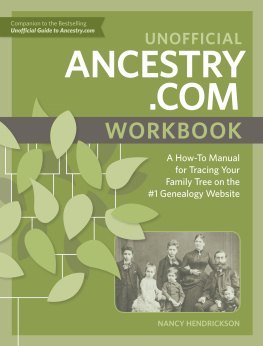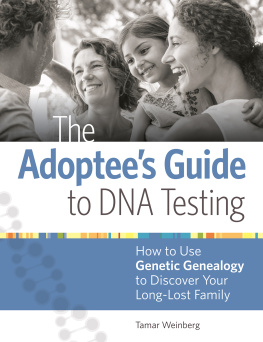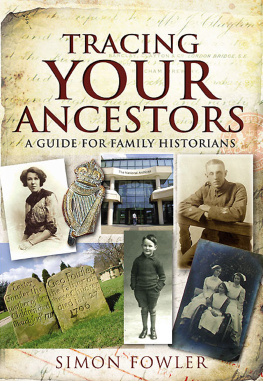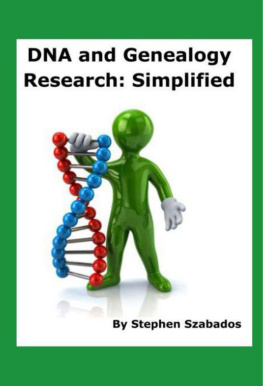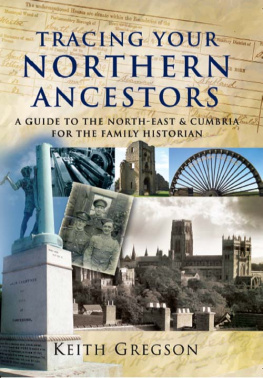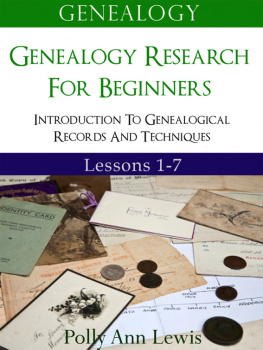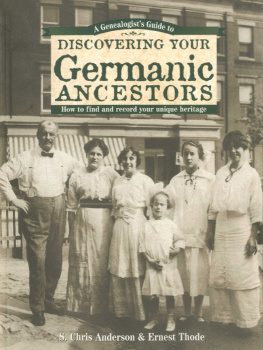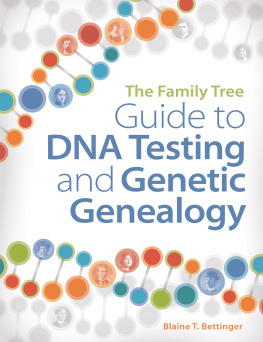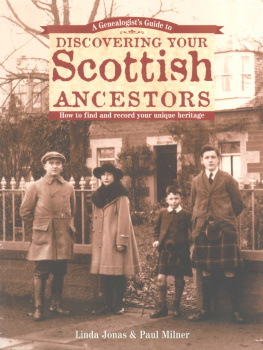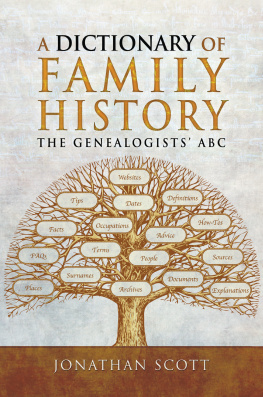Pagebreaks of the print version

TRACING YOUR ANCESTORS USING DNA
FAMILY HISTORY FROM PEN & SWORD
Tracing Secret Service Ancestors
Tracing Your Air Force Ancestors
Tracing Your Ancestors
Tracing Your Ancestors from 1066 to 1837
Tracing Your Ancestors Through Death Records
Tracing Your Ancestors Through Family Photographs
Tracing Your Ancestors Using the Census
Tracing Your Ancestors Childhood
Tracing Your Ancestors Parish Records
Tracing Your Aristocratic Ancestors
Tracing Your Army Ancestors 2nd Edition
Tracing Your Birmingham Ancestors
Tracing Your Black Country Ancestors
Tracing Your British Indian Ancestors
Tracing Your Canal Ancestors
Tracing Your Channel Islands Ancestors
Tracing Your Coalmining Ancestors
Tracing Your Criminal Ancestors
Tracing Your East Anglian Ancestors
Tracing Your East End Ancestors
Tracing Your Edinburgh Ancestors
Tracing Your First World War Ancestors
Tracing Your Great War Ancestors: The Gallipoli Campaign
Tracing Your Great War Ancestors: The Somme
Tracing Your Great War Ancestors: Ypres
Tracing Your Huguenot Ancestors
Tracing Your Jewish Ancestors
Tracing Your Labour Movement Ancestors
Tracing Your Lancashire Ancestors
Tracing Your Leeds Ancestors
Tracing Your Legal Ancestors
Tracing Your Liverpool Ancestors
Tracing Your London Ancestors
Tracing Your Medical Ancestors
Tracing Your Merchant Navy Ancestors
Tracing Your Naval Ancestors
Tracing Your Northern Ancestors
Tracing Your Pauper Ancestors
Tracing Your Police Ancestors
Tracing Your Prisoner of War Ancestors: The First World War
Tracing Your Railway Ancestors
Tracing Your Royal Marine Ancestors
Tracing Your Rural Ancestors
Tracing Your Scottish Ancestors
Tracing Your Second World War Ancestors
Tracing Your Servant Ancestors
Tracing Your Service Women Ancestors
Tracing Your Shipbuilding Ancestors
Tracing Your Tank Ancestors
Tracing Your Textile Ancestors
Tracing Your Trade and Craftsmen Ancestors
Tracing Your Welsh Ancestors
Tracing Your West Country Ancestors
Tracing Your Yorkshire Ancestors
TRACING YOUR ANCESTORS USING DNA
A Guide for Family and Local Historians
edited by
Graham S. Holton
Contributors
John Cleary, Michelle Leonard,
Iain McDonald, Alasdair F. Macdonald
First published in Great Britain in 2019
PEN & SWORD FAMILY HISTORY
an imprint of
Pen & Sword Books Ltd
47 Church Street, Barnsley, South Yorkshire, S70 2AS
Copyright Graham S. Holton and Contributors, 2019
ISBN 978 1 52673 309 2
eISBN 978 1 52673 310 8
Mobi ISBN 978 1 52673 311 5
The right of Graham S. Holton and Contributors to be identified as Authorsof the Work has been asserted by them in accordance with the Copyright, Designs and Patents Act 1988.
A CIP catalogue record for this book is available from the British Library.
All rights reserved. No part of this book may be reproduced or transmitted in any form or by any means, electronic or mechanical including photocopying, recording or by any information storage and retrieval system, without permission from the Publisher in writing.
Pen & Sword Books Ltd incorporates the imprints of Pen & Sword Airworld, Archaeology, Atlas, Aviation, Battleground, Discovery, Family History, Fiction, History, Maritime, Military, Military Classics, Politics, Select, Social History, True Crime, Frontline Books, Leo Cooper, Remember When, Seaforth Publishing, The Praetorian Press, Wharncliffe Local History, Wharncliffe Transport, Wharncliffe True Crime and White Owl.
For a complete list of Pen & Sword titles please contact
PEN & SWORD BOOKS LTD
47 Church Street, Barnsley, South Yorkshire, S70 2AS, England
E-mail:
Website: www.pen-and-sword.co.uk
or
PEN & SWORD BOOKS LTD
1950 Lawrence Rd., Havertown, PA 19083, USA
E-mail:
Website: www.penandswordbooks.com
INTRODUCTION
Graham S. Holton
has now achieved a high profile for the topic among the general public. The motivation behind an interest in this field may range from those hoping to find answers to questions arising from their genealogical research, to adoptees and other individuals who are seeking to identify their biological parents. This book aims to appeal to the whole range of interest groups and to both those new to the topic and those with some experience.
As you will see, this is a collaborative work, for the simple reason that we believe this will produce the best book possible. There are a number of specific fields of interest within genetic genealogy, some relating to the type of DNA test used, some to the technical aspects of analysing test results and yet others using statistical mathematics to investigate how to date when a common ancestor was living. To these should be added the whole question of the use of , which is now becoming important for its benefits to genealogy. The book draws on the varied expertise of the contributors to give a wide-ranging, but often detailed, view of the topic. If we have succeeded in our aim, it will give both practical guidance on DNA tests and their interpretation and a deeper understanding of the whole field.
Due to the fact that genetic genealogy is such a fast-developing area, producing an up-to-date book on the subject is a challenge, but we have made every effort to do just that, including making some predictions about what developments might be seen in the future.
Making best use of this book
look to the future. Although the first of these chapters gives the background to the testing of ancient DNA, its principal purposes are to emphasise the importance of very careful consideration and planning for any projects involving ancient DNA, the significant role that genealogists can play in these and how this type of work can benefit genealogical research in the future. The final chapter discusses the likely increases in the number of test-takers and the level of tests taken, technical developments in the tests being offered and holds out some intriguing possibilities for other future developments.
Challenges
Our subject area has often been seen as challenging complex and difficult to understand. There has been some justification for this view, but some of the complexity has been caused by particular circumstances and some was perhaps avoidable.
Testing company websites are not always particularly user-friendly and can leave new test-takers confused and bewildered due to a lack of ) has promoted, very successfully, probably the most unreliable feature of DNA testing for genealogy, in its current state of development. By far the most important feature is the ability to compare how closely test results match in order to predict relationships. It is possible that test-takers disappointed with their admixture estimates may be discouraged from pursuing genetic genealogy and remain unaware of its more useful outcomes.
Currently by far the largest proportion of test-takers are from North America, which in some ways impedes progress in discovering long descents. Immigrant families without any knowledge of, but a great interest in, their earlier origins, find a lack of matches with families in the previous homelands to help them identify these origins. An increase in the number of test-takers from the Old World would be very much welcomed.


